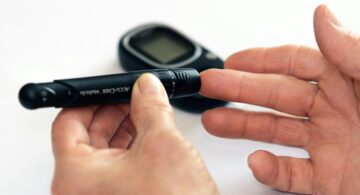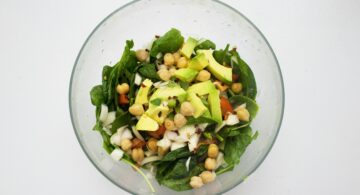What Fruits Are Best For Diabetes And Which Should I Avoid?
Fruits provide a great source of vitamins, minerals, fiber, antioxidants, and carbohydrates that our bodies need in order to function well. This is equally true for those with diabetes. Let’s look at the following issues related to fruit:
- The glycemic index of fruits
- How the fruit is prepared
- What quantities of fruit to eat
- Know how your body reacts to various fruits
The Glycemic Index of Fruits
A key factor to take into consideration regarding fruits is their glycemic index (GI). This is a measure of the extent to which a food impacts blood sugar levels. Glycemic index is shown as a score between zero and 100. The higher the higher the GI, the more likely that food will raise your blood sugar levels. A low GI is 0-55, medium GI is 56-69, and high GI is any food 70 or above.
The following fruits fall into the low GI category: apples, bananas, blueberries, cranberries, grapefruit, grapes, lemons, limes, oranges, pears, plums, prunes, raspberries, and strawberries. These fruits are in the medium GI range: apricots, cantaloupe, figs, kiwifruit, papaya, raisins and pineapple. Watermelon is ranked high on the glycemic index at 72.
How the Fruit is Prepared
For someone with diabetes, those fruits in the low GI range will typically be best, impacting your blood sugar least. But the fruit itself is not always the determining factor. How the fruit is prepared is also very important. The American Diabetes Association recommends that it is best to eat fruits fresh, frozen, or canned without added sugars.
Fruit juices are not the same as eating the whole fruit and will generally raise your blood sugar levels rapidly. The reason for this is that juice no longer has the fiber that the fresh fruit naturally contains, so the body digests juice very quickly. Similarly, fruit canned with added sugar will have a higher GI because of the sugary syrup in which the fruit is packed.
Dried fruits in general also have a higher GI. Because the water has been removed from the fruit, the concentration of sugars is higher. Someone with diabetes can eat dried fruit, but in small quantities. The problem with dried fruit is often our perception. Dried fruit is smaller, so we tend to eat more of it, not accounting for the higher sugar content.
For instance, let’s say that we determine a half-cup of grapes (about 15 grapes) is a serving size. And 15 grapes can be satisfying. But would we limit ourselves to just fifteen raisins (dried grapes) as a portion? Nobody eats just 15 raisins! A half-cup of raisins contains over eight times the number of carbs as the same portion of grapes.
What Quantities of Fruit to Eat
That brings us to the next factor: what quantities of fruits to eat. Dr. Scott Saunders, MD, tells about a 22-year-old woman with prediabetes who could not lose weight on a 1000 calorie-per-day diet. He had her write down everything she ate for a week to determine the cause. It was fruit! She was eating lots of watermelon, cantaloupe and grapes that were raising her blood sugar levels and preventing her from losing weight.
In addition to watching the GI of foods for maintaining a healthy diabetic diet, portion control is also very important. Too much of any carb will raise your blood sugar levels.
Know How Your Body Reacts to Various Fruits
The final factor to consider is how your own body reacts. How do YOU respond to certain foods, their quantity, frequency, or combination with other foods? Everybody is different. I talked to one person with type 2 diabetes who has found that she cannot eat bananas, pineapple, or grapes without those fruits spiking her blood sugar levels. Others with type 2 diabetes may be able to eat those fruits without experiencing such a rise in blood sugar.
For this reason, it’s very important to keep track of what you eat, when you eat it, and how it impacts your blood sugar levels. While the other three factors I’ve mentioned are important and provide general guidelines, this last factor is one that only you can monitor and control.
CLICK HERE TO LEARN MORE ABOUT REVERSING YOUR TYPE 2 DIABETES


















